
Camp Randall’s unforgettable concerts
As shows return after nearly 30 years, relive the legendary performances that rocked the stadium.
Live music is here again. This summer, Camp Randall Stadium will open its gates to concertgoers for the first time since 1997, when the Rolling Stones capped a decade-long run of world-famous rock bands making tour stops at the historic home of Badger football.
Country pop star Morgan Wallen will perform for Camp Randall crowds on June 28 and 29, followed by the ultra-popular rock band Coldplay on July 19 (for the only Midwestern stop on its global tour). The concerts will provide an important revenue source for the UW Department of Athletics as it navigates a new landscape of college sports. Appealing to fans and promoters alike, Camp Randall is the second-largest venue in Wisconsin, with a seating capacity just behind Lambeau Field.
Duke Ellington and his jazz orchestra performed Camp Randall’s first concert in 1972 to a crowd of 6,000 with $1 tickets. But Pink Floyd’s flashy appearance in 1988 marked the start of major stadium shows, making Madison the center of the music universe on select summer nights.
Join us in revisiting some of those indelible scenes.
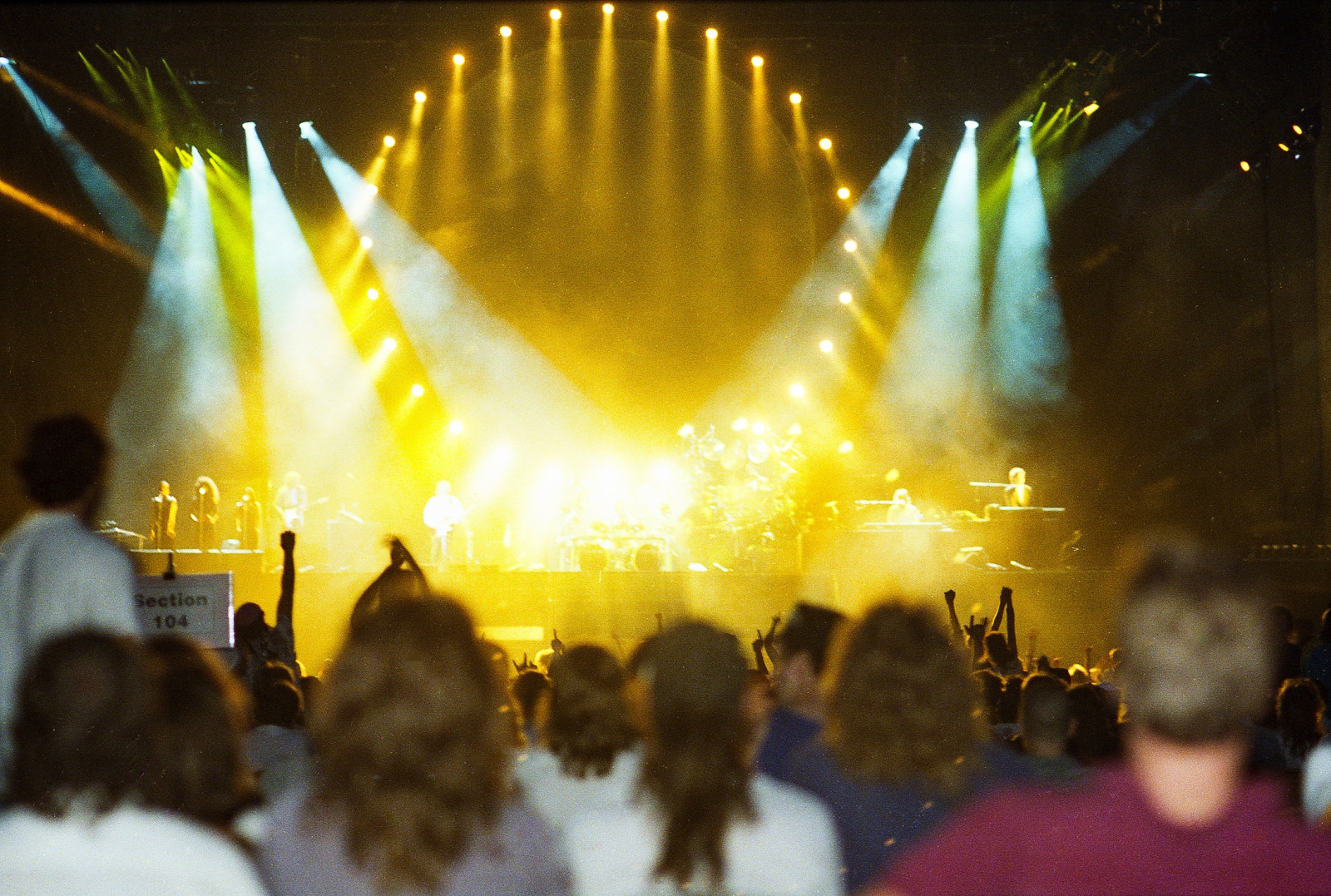
Pink Floyd | A Momentary Lapse of Reason Tour | May 20, 1988
Pink Floyd proved the perfect band to set the stage for Camp Randall concerts. True to form, despite the departure of founding member Roger Waters, the legendary London rock stars put on a spectacle through their immersive music and over-the-top visual performance. As they sampled their latest album and dipped into their greatest hits, artificial smoke filled the stadium bowl along with flames and fireworks. Trippy videos appeared on a circular screen behind the stage, while laser lights dazzled the crowd of 45,000-plus. Adding to the surreal scene was the band’s famous inflatable pig roaming the sky above. As one concertgoer told the Wisconsin State Journal: “It’s the greatest show you can see for $20.”
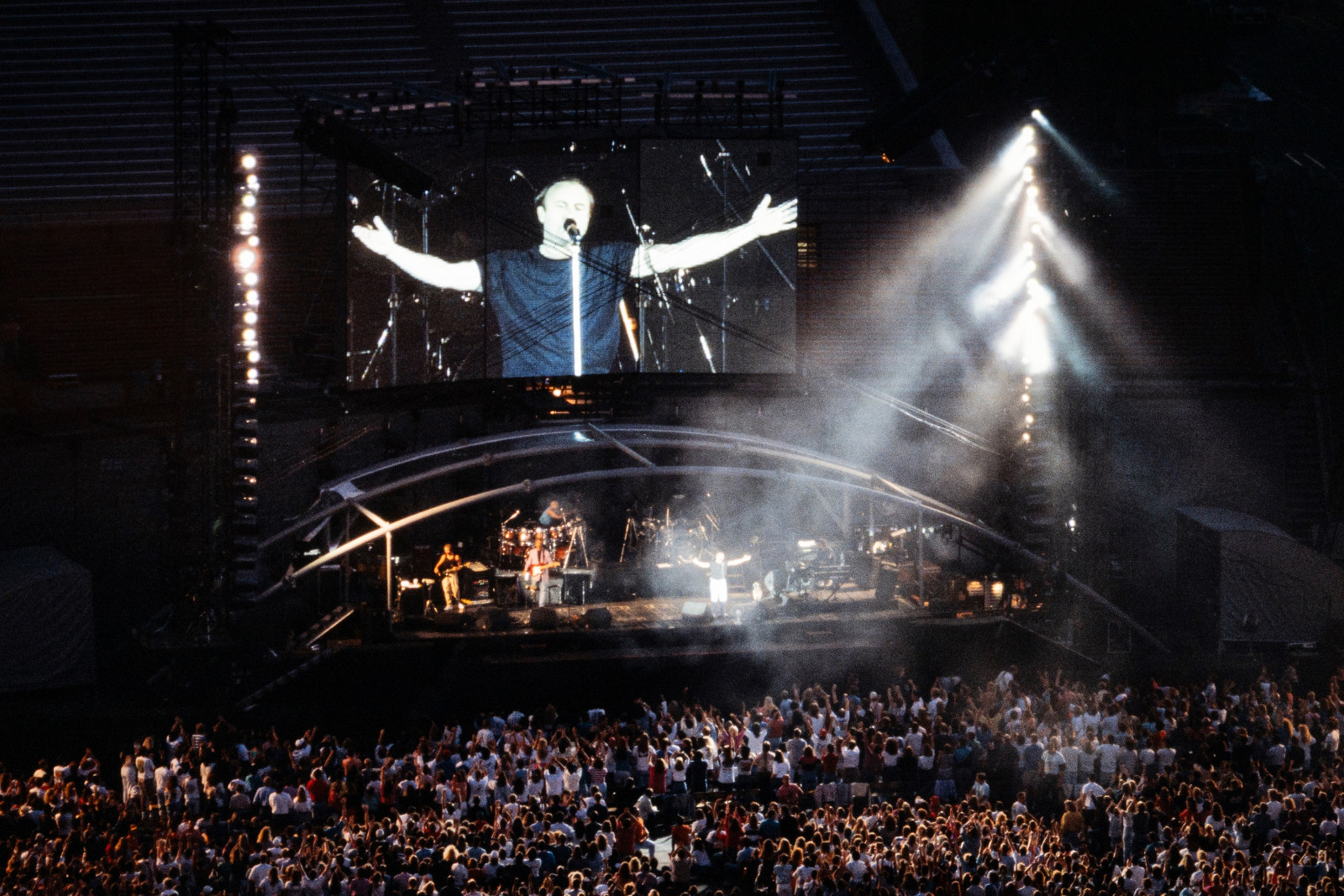
Genesis | We Can’t Dance Tour | June 9, 1992
Genesis and lead singer Phil Collins (projected above) came to Camp Randall in 1992 on the heels of their wildly successful 14th album, “We Can’t Dance.” Nearly 50,000 people attended what a local DJ called the “social event of the summer,” with neighboring businesses treating the Tuesday concert like a Saturday football tailgate. Collins was “goofy the entire show,” the Capital Times reported, as he bantered with fans and romped around the elaborate stage. The English progressive rock band sent the crowd home happy and humming with encore performances of classic hits “Turn It On Again” and “Invisible Touch.”
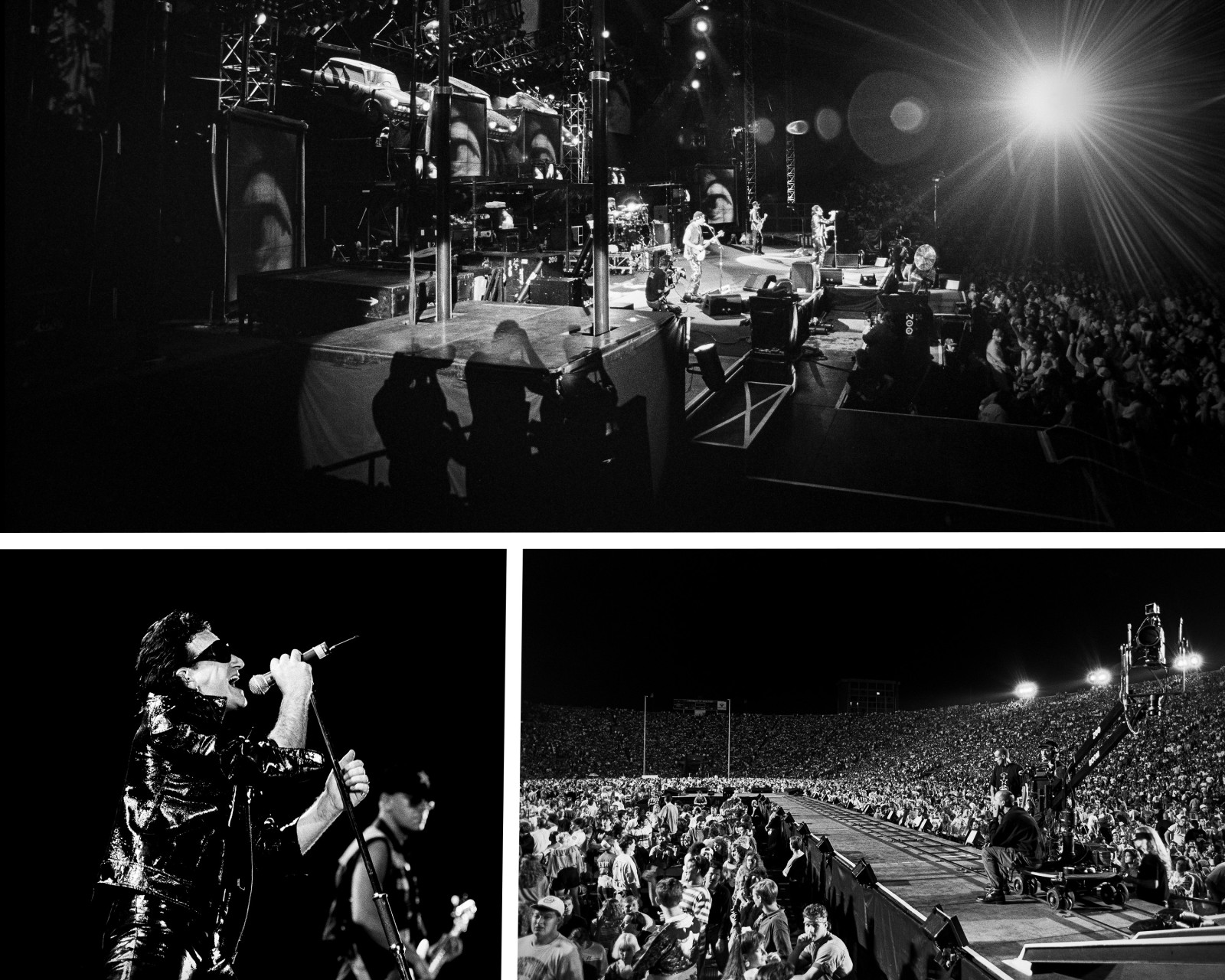
U2 | Zoo TV Tour | Sept. 13, 1992
As one of the most successful touring acts of all time, U2 made its debut at Camp Randall in 1992. The Irish rock band led by Bono (singing above) attracted a sellout crowd of 62,280, which still stands as a concert record in Madison. In between chart-toppers, U2’s Zoo TV Tour aimed to overload the audience’s senses with video content that served as a parody and critique of the corrosive influence of television on society. Augmenting traditional lighting were the beaming headlights of eight Trabant cars suspended from cranes. The combined result, according to the State Journal, was “easily one of the most confident, exciting and explosive shows ever to hit Madison.” The band’s set included “Where the Streets Have No Name,” which later became the Badger football team’s iconic entrance song. And by the end of the night, the Capital Times wrote, U2 had “transformed the stadium into the Church of Bono.”
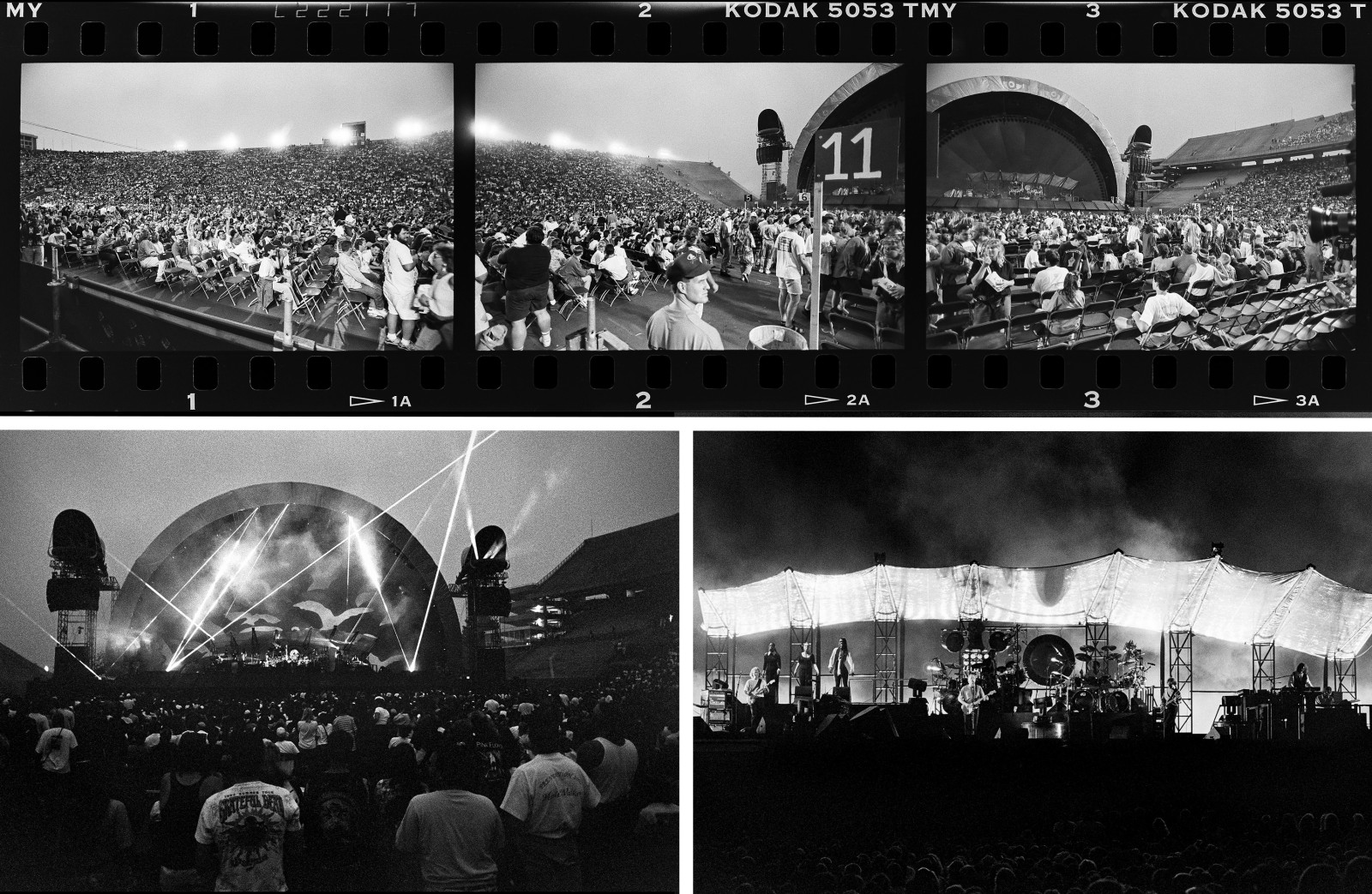
Pink Floyd | The Division Bell Tour | July 3, 1994
Pink Floyd returned to Camp Randall for an encore performance in 1994, with all the same razzle-dazzle but one unwelcome addition: rainy weather. Light showers came down on the sold-out crowd of more than 60,000, before turning to a downpour during the final songs. Some called it the “Pink Flood” show. Still, fans were treated to a mesmerizing Pink Floyd experience on what turned out to be the band’s last tour.

Rolling Stones | Voodoo Lounge Tour | Aug. 26, 1994
Not many venues can say they hosted two of the greatest rock bands of all time in consecutive months. But Camp Randall pulled off that feat when it welcomed the Rolling Stones right after Pink Floyd in the summer of 1994. As an early stop on the highest-grossing tour of its era, the Rolling Stones turned the UW’s stadium grounds into the Voodoo Lounge, complete with spooky patrons (giant inflatable figures, including of Elvis and a cobra). Bandmates Mick Jagger (above singing), Keith Richards (above on guitar), Charlie Watts and Ronnie Wood proved they could still put on a mighty show in their fourth decade and in front of 51,000-plus faithful. Wrote the State Journal: “It was classic rock in the best sense of the phrase — from the Stones’ stormy opener (‘Not Fade Away’) to the final chords and fireworks of the frantic ‘Jumping Jack Flash.’”
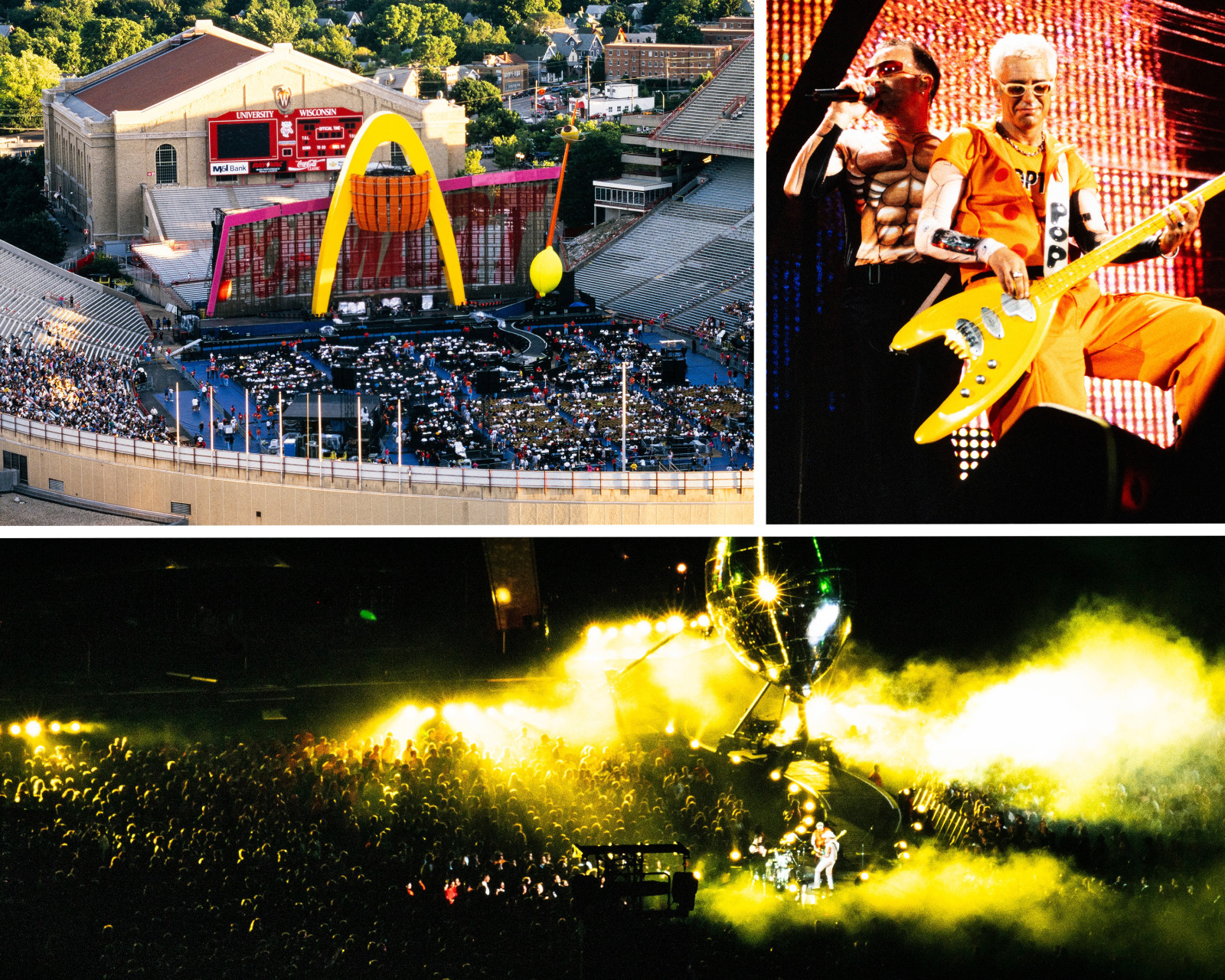
U2 | PopMart Tour | June 25, 1997
Five years after its historic performance, U2 (with Bono and bass guitarist Adam Clayton pictured above right) returned to Camp Randall as part of the PopMart Tour. This time, the elaborate theme poked at the excesses of consumerism, with the stage featuring the world’s largest TV screen, a 40-foot-tall lemon mirror ball, and a 100-foot-tall golden arch (not-so-subtly mimicking McDonald’s). Acknowledging the band’s prior visit, Bono told the crowd: “This is how we spent all the cash you gave us.” The set included “Staring at the Sun,” which the singer dedicated to UW–Madison alumnus Butch Vig, the Garbage drummer who produced a remix version of the single. According to the State Journal, the crowd of 34,000, while noticeably smaller this time, still got “drunk on kitsch and spectacle” and “[sang] along with every word.”
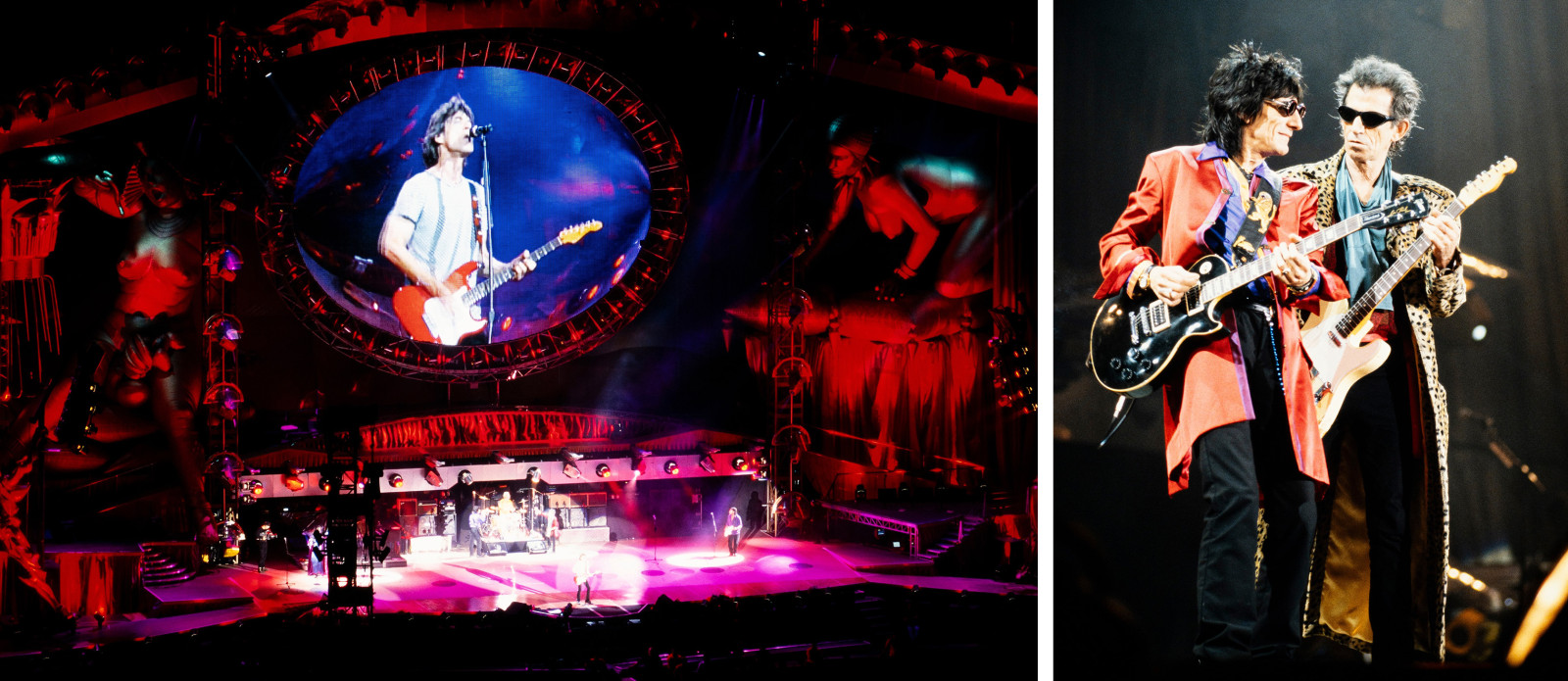
Rolling Stones | Bridges to Babylon Tour | Oct. 6, 1997
For nearly three decades, the last musical word at Camp Randall belonged to the Rolling Stones. The band returned in 1997 in front of a disappointing crowd of only 27,000, partly blamed on high ticket prices and the outdoor concert falling on a Monday in October. But those who did show were treated to what the State Journal called one of the band’s “tightest, best performances in years,” with a lively-as-ever Mick Jagger (above left) on the mic and spirited guitar play by Ron Wood and Keith Richards (above right). The Stones opened with their timeless hit “(I Can’t Get No) Satisfaction” — a sentiment that Camp Randall concert lovers have probably felt ever since. That is, until now.